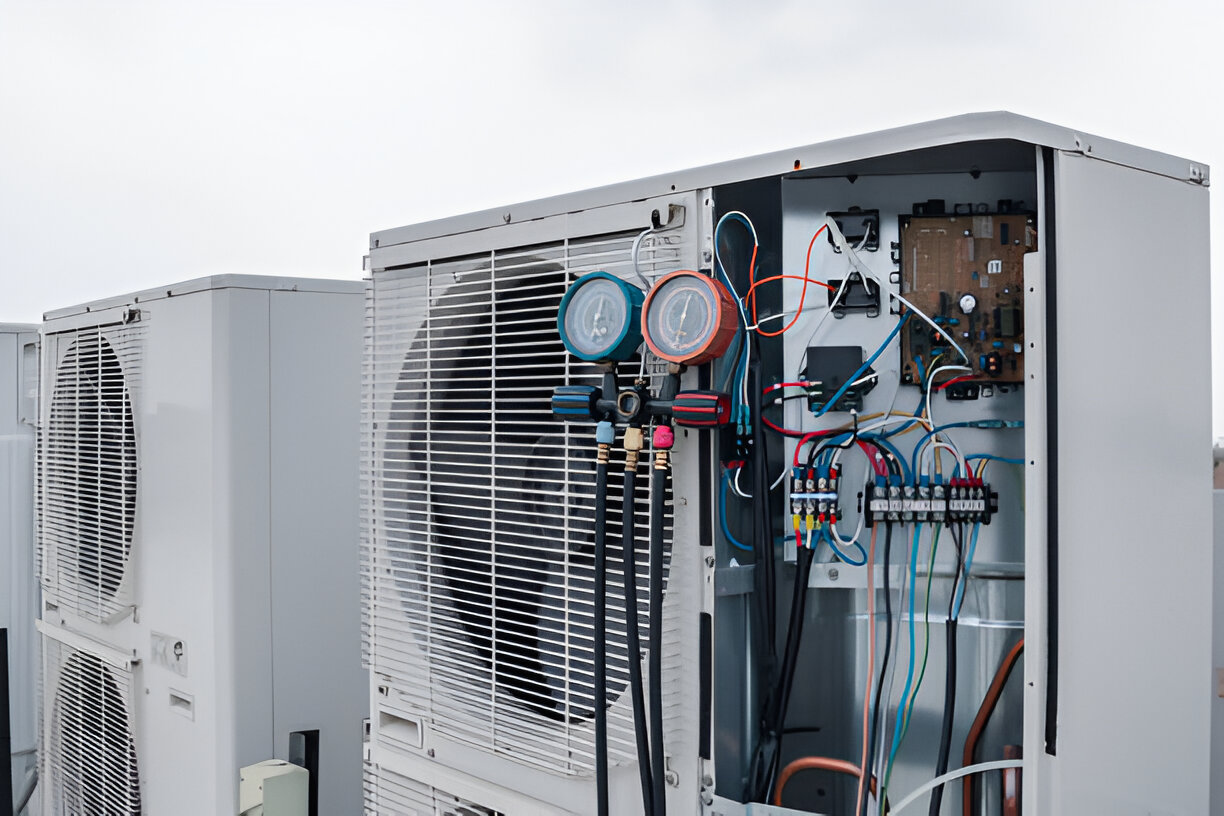24 Hour Heat Pump Repair in Ahwatukee, AZ
When a heat pump fails in Ahwatukee, AZ—especially during a triple-digit summer day or a dusty monsoon storm—comfort and safety move from convenience to urgency. Our 24 hour heat pump repair service addresses those critical moments with fast, professional response and clear diagnostics so your home regains reliable heating or cooling as quickly as possible. This page explains typical response times, after-hours dispatch procedures, the urgent issues we handle, what to expect during an emergency service call, and the best immediate steps homeowners should take while help is on the way.

Why 24-hour heat pump repair matters in Ahwatukee
Ahwatukee homes face long, hot summers, frequent dust and pollen, and periodic monsoon storms that can cause power surges and unit damage. Many local houses rely on heat pumps as their primary cooling source, so a mid-summer failure can create dangerous indoor temperatures fast. Prompt, around-the-clock service reduces the risk of:
- Heat-related health concerns for vulnerable family members
- Secondary damage from prolonged system stress (compressor burnout, frozen coils, duct moisture)
- Escalating repair costs from neglected issues
- Interrupted business operations in home offices
Typical emergency response times and service coverage
- Initial triage: Immediate phone or message triage when you report an emergency to collect symptoms and safety concerns.
- Dispatch window: For Ahwatukee emergency calls, typical on-call technician arrival ranges from within 60 to 120 minutes, depending on time of day, traffic, and severity. Response is prioritized for total system failures and safety hazards.
- After-hours coverage: On-call technicians are rotated to provide 24/7 availability. After-hours calls trigger a dedicated emergency dispatch process rather than the standard daytime scheduling.
After-hours dispatch procedures (how we manage emergencies)
- Emergency calls are triaged to gather:
- Symptoms (no cooling, odd noises, burning smells, frequent cycling)
- Any visible hazards (sparks, smoke, water pooling)
- Home access instructions in gated or HOA communities
- A qualified technician is assigned based on proximity and skill set and given preliminary notes and a parts staging list for common emergency repairs.
- Trucks are stocked for typical emergency repairs (capacitors, contactors, start/run capacitors, common refrigerant tools, electrical parts). If specialized parts are needed, temporary fixes or safe shutdown procedures are applied until full repair is possible.
Urgent heat pump issues handled around the clock
- Complete system failure (no cooling or heating at all) — immediate priority during peak heat or cold
- Electrical or fire risks — burning smells, visible sparking, repeated breaker trips
- Refrigerant leaks with performance loss — unsafe to run and reduces cooling capacity
- Compressor failures or seizing — prevents operation and risks expensive damage
- Frozen coils or severe icing causing loss of function (often a symptom of airflow/electrical faults)
- Thermostat communication failures leaving system unresponsive
- Storm or power-surge damage during monsoon season that may damage control boards or outdoor fan motors
- Water intrusion or drainage failure leading to water inside equipment or ducting
What to expect during an emergency heat pump service call
- Quick on-call triage, followed by an ETA and technician arrival with identification and a fully stocked service vehicle.
- A focused safety check on arrival: electrical, gas (if present), and any signs of smoke or odor. If hazards exist, the technician will recommend immediate shutdown and isolation.
- System diagnostics: inspection of outdoor unit, indoor air handler/coil, thermostat, electrical panel, and refrigerant pressures. Testing is done with the system both off and in controlled test modes.
- Clear explanation of findings in plain language: the technician will describe the cause, the immediate risks, and recommended next steps (repair, temporary mitigation, or replacement).
- On-site repairs where safe and feasible: many emergency repairs (capacitor, contactor, motor start components, minor refrigerant top-off) can be completed during the visit.
- If parts are not available, the technician will provide safe interim options (fan-only operation, breaker isolation, temporary bypass) and schedule follow-up service to complete repairs.
- Documentation of work performed and any warranty information for parts/labor as applicable.
Immediate steps homeowners should take while waiting for emergency service
- If you detect a burning smell or see smoke, evacuate occupants and call emergency services—do not attempt to operate the system.
- If the system is tripping breakers repeatedly, switch off the unit at the thermostat or circuit breaker to prevent further damage.
- Keep indoor doors closed to maintain the coolest space and reduce strain on the system.
- Move vulnerable occupants (children, elderly, pets) to the coolest area of the home or a public cooling location if temperatures are extreme.
- Avoid attempting DIY repairs on electrical or refrigerant systems—these are hazardous and can worsen damage.
Benefits of prompt emergency repair vs. delaying service
- Restores comfort quickly, reducing health risks during heat waves.
- Prevents additional component damage that can result from running a stressed unit.
- Often reduces overall repair costs by catching failures before secondary systems fail.
- Preserves system efficiency which saves energy and lowers bills.
- Helps preserve indoor air quality by resolving drainage or airflow issues that encourage mold growth.
Preventive tips to minimize emergency needs in Ahwatukee
- Replace or clean filters monthly during high-use seasons to prevent airflow restriction.
- Keep the outdoor unit clear of debris, landscape growth, and dust buildup common in desert neighborhoods.
- Schedule professional maintenance in spring and late fall to catch wear items before peak seasons.
- Install and use a surge protector for HVAC equipment to guard against monsoon-related electrical damage.
- Monitor thermostat behavior and unusual sounds; early detection often prevents an after-hours emergency.
This overview is designed to help Ahwatukee homeowners understand what 24-hour heat pump repair involves, how emergency response is managed, and what to expect when a critical situation arises. Fast, safe action in an emergency protects your family, your home, and your heating and cooling investment.






